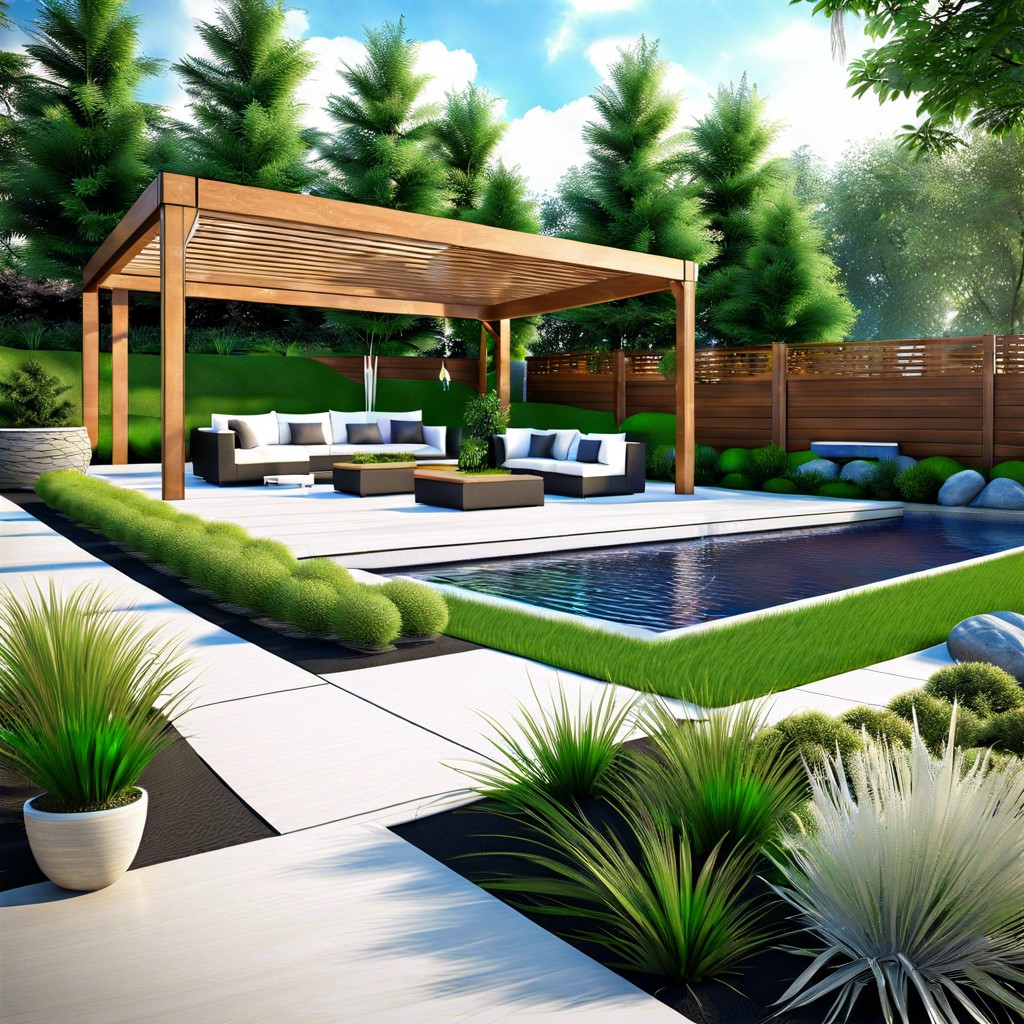Discover how professional landscaping can transform your outdoor space, increase property value, and enhance your enjoyment of your home.
Key takeaways:
- Landscape design shapes outdoor spaces for function and beauty.
- Drainage and irrigation systems are essential for a thriving outdoor environment.
- Different types of landscaping include softscaping, hardscaping, and xeriscaping.
- Professional landscaping boosts curb appeal and adds value to your property.
- Embracing eco-friendly practices benefits nature and adds value to your property.
Look Inside:
Landscape Design

Landscape design shapes the aesthetic and functional aspects of outdoor spaces. It involves carefully planning where to place plants, paths, and other features to create an inviting environment. Key principles include unity in design, balance between natural and man-made features, and emphasis on focal points that draw attention, such as water features or statement plants.
Start by assessing your space and identifying your needs. Do you desire a playground for your kids, a tranquil garden retreat, or a space for entertaining guests? These questions dictate the layout and elements included in the design.
Consider local climate and soil types, as selecting plants that thrive in your specific conditions will minimize maintenance and ensure your garden’s growth and longevity. Careful selection of plants can also provide year-round interest through varying textures and colors.
Effective landscape design also integrates practical considerations such as privacy, wind shielding, and sun exposure. This thoughtful planning improves not only the beauty but also the usability of your outdoor area.
Drainage and Irrigation Systems
A well-thought-out drainage system prevents water from pooling in your yard, which can damage plant roots and erode the soil. By installing French drains or grading the landscape, you can ensure water flows away from your property, maintaining its structural integrity.
On the other hand, effective irrigation is crucial for keeping your plants healthy without overusing water. Drip irrigation systems, for example, deliver water directly to the roots of plants, minimizing evaporation and waste. Automated sprinkler systems can also be adjusted to the needs of your specific landscape, providing convenience and water efficiency.
Together, proper drainage and irrigation are foundational to maintaining a thriving outdoor environment, promoting plant health while conserving water and protecting your property.
Types of Landscaping: Softscaping, Hardscaping, Xeriscaping
Each type of landscaping brings its charm and function to an outdoor space, all while addressing different needs and preferences.
Softscaping involves the natural elements of the landscape. Think of the lush arrangements of flowers, shrubs, trees, and grassy areas. These living components can transform any yard into a verdant oasis, perfect for those who love a verdant display.
Hardscaping, on the other hand, includes the non-living features of your yard. This could mean patios, walkways, retaining walls, and decks. It’s all about creating structure and organizing your space for both function and appeal. If you lean towards a more architectural look with low maintenance, hardscaping is your go-to.
Lastly, xeriscaping focuses on water efficiency. This method uses drought-resistant plants and techniques to reduce the need for irrigation. It’s an ideal choice in arid climates or for those aiming to reduce their water usage while still maintaining an attractive yard.
Benefits and Costs of Professional Landscaping
Hiring a professional landscaper can transform your outdoor space while potentially raising your property’s value. Here’s how investing in professional landscaping can be beneficial and what it might cost you:
Firstly, a well-designed landscape boosts curb appeal, making your home stand out in the neighborhood and potentially increasing its market value. Picture colorful flower beds and a pristine, green lawn that make your home the envy of the block!
Secondly, professionals bring expertise that ensures every plant thrives and the overall design is cohesive. This expertise means less trial and error for you, saving money and time in the long run. They understand soil types, plant compatibility, and aesthetic design, taking the guesswork out of the equation.
About costs, pricing can vary widely based on the scope of your project. Minor improvements such as flower planting might cost a few hundred dollars, whereas comprehensive landscaping design including hardscape elements like patios or retaining walls can run into thousands. Always discuss your budget upfront to align your vision with what’s financially feasible.
Moreover, ongoing maintenance by professionals keeps your garden in top shape without you lifting a finger. This service can be invaluable for busy homeowners who may not have the time or desire to manage complex garden tasks themselves.
By investing in professional landscaping services, you’re not just paying for immediate aesthetic upgrades but also for the long-term health and functionality of your outdoor living space.
Eco-friendly Landscaping Practices
Embracing sustainability in your garden not only benefits nature but also adds lasting value to your property. Consider incorporating native plants, which thrive with minimal water and fertilizer because they are well-adapted to local climate conditions. This choice cuts down on resources and attracts local wildlife, fostering a healthier ecosystem.
Rain gardens are another smart feature; they are designed to absorb rainwater runoff from roofs, driveways, and walkways, reducing the need for complex drainage systems and preventing pollutants from reaching nearby waterways.
Opting for organic mulches is beneficial too. They decompose naturally, enriching the soil with nutrients and helping it retain moisture, which reduces the need for watering.
Solar-powered lighting is a great addition for those long summer evenings. It saves on electricity and reduces your carbon footprint, all while illuminating your beautiful landscape.
By integrating these practices, you encourage a naturally thriving environment that requires less maintenance, fewer resources, and provides a sanctuary for local flora and fauna.